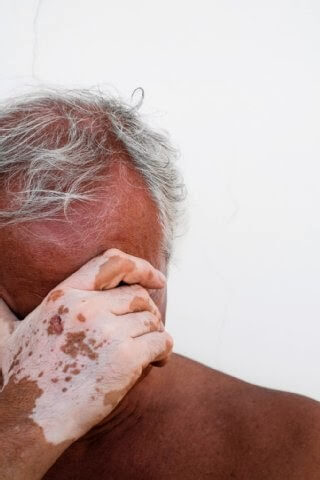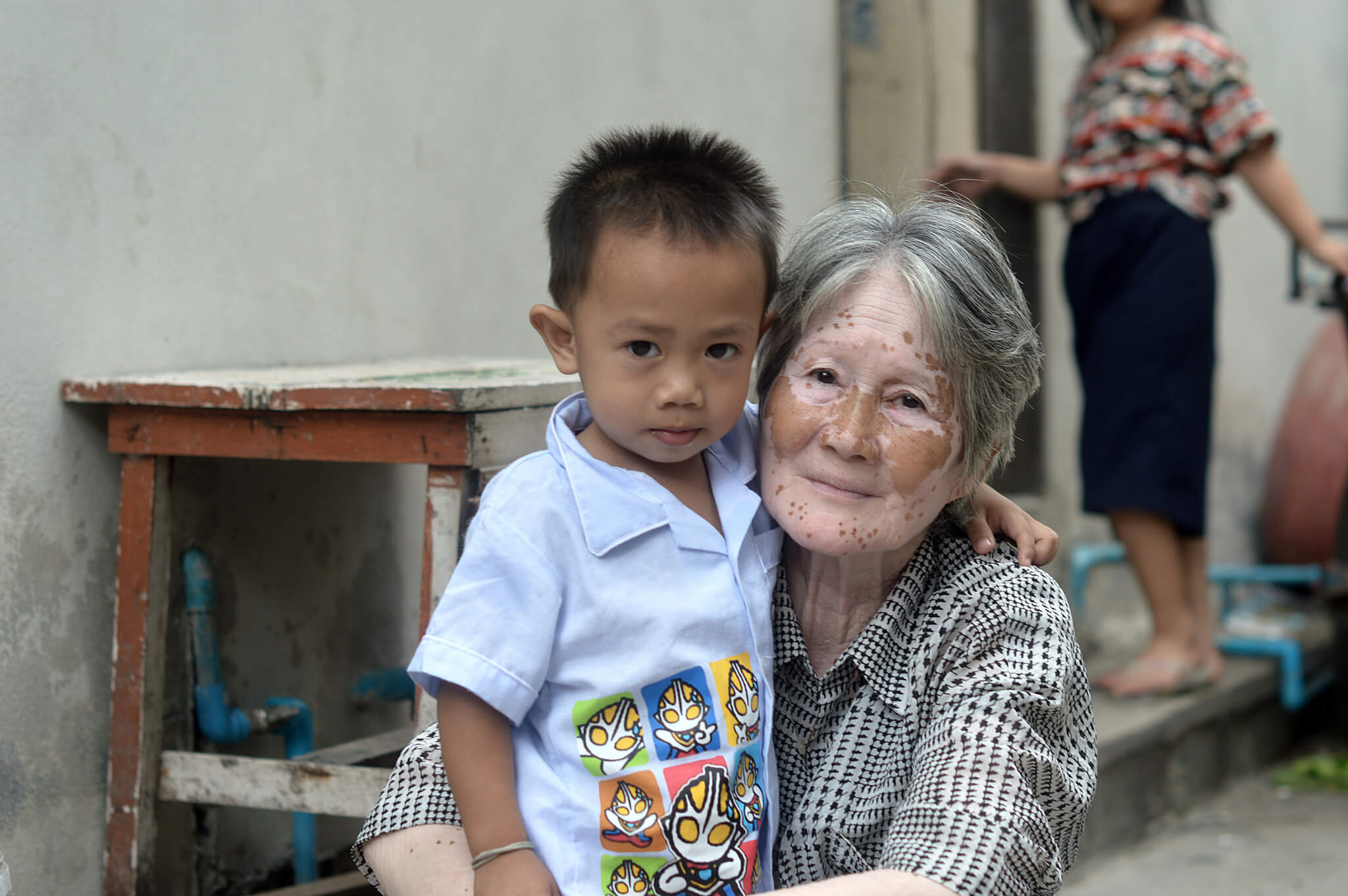Vitiligo: How to look 20 until 50

This article takes an indepth look at a specific symptom of the Vitiligo skin condition. Quoting complex Medical Papers and Journals, I hopefully explain the consistent youthful appearance of Vitiligo sufferers, as simply as possible. How and why certain people will appear more youthful than others? Is this the key to eternal youth? There are solid allusions to this in a recent study from Queen Mary University of London funded by the Medical Research Council and Biotechnology and Biological Sciences Research Council.
Warning: A some science symbols and language ahead. This article focuses around biology at cellular level, in particular ontogenesis related functions.
The development of an individual organism or anatomical or behavioural feature from the earliest stage to maturity.
https://en.oxforddictionaries.com/definition/ontogenesis




What is Vitiligo?
Vitiligo is a condition that causes depigmentation of parts of the skin. It occurs when melanocytes, the cells responsible for skin pigmentation, detach from the basal membrane (melanocytorrhagy). Basically, is a genetic predisposition to dysfunctional melanocyte adhesion, and it can be triggered by an internal or external severe event.

Above is a diagram displaying the difference between a normal cell (top two) and one with vitiligo (bottom two). Shown are the changes in cell operation before cell stress/damage (left) then after (right). Note the difference in “Integin”: Essentially this is the stuff that holds interlinking cells together. Integin contributes to a youthful and elastic cell.
Attachment of cell to the ECM:
The connection between the cell and the ECM may help the cell to endure pulling forces without being ripped out of the ECM. The ability of a cell to create this kind of bond is also of vital importance in ontogeny.
https://en.wikipedia.org/wiki/Integrin
In biology, the extracellular matrix (ECM) is a collection of extracellular molecules secreted by cells that provides structural and biochemical support to the surrounding cells.
https://en.wikipedia.org/wiki/Extracellular_matrix
Also note, with the diagram, Integrin (green line) is already faulty within vitiligo patients. Meaning, even before any visual signs of vitiligo occur (depigmentation), there will be predispositions to the illness. Now we have the foundation, lets look at how vitiligo is related to the aging process.
The Fountain of Youth
According to a study at Queen Mary University of London (QMUL) published in the journal Cell Reports, the protein integrin-ß3 is a new marker and regulator of cellular senescence. (Full Scientific Research Here)

During cell ontogeny, cellular senescence is essentially where normal cells cease to divide. Usually related to age, new cells (in this case skin cells) are no longer produced in this area.
Senescence is from the Latin word senescere, meaning “to grow old”, from senex
The adjoining cells can still communicate primarily through the release of inflammatory proteins. Which is why we see many people of age have inflammatory issues.
β3 levels are dynamically increased during oncogene-induced senescence….Finally, we show an increase in β3 levels in a subset of tissues during aging. Altogether, our data show that integrin β3 subunit is a marker and regulator of senescence.
https://www.ncbi.nlm.nih.gov/pmc/articles/PMC5357738/
Furthermore, here we we have another paper linking “Integin” to the aging process in cell mutations
We evaluated behavioural aging and lifespan in flies harbouring loss-of-function mutations… the gene that encodes βPS, a β integrin…We report here that age-related declines in locomotor [movement] activity are ameliorated [read: improved] and that mean lifespan is increased in myospheroid mutants
http://onlinelibrary.wiley.com/doi/10.1046/j.1474-9728.2003.00060.x/full
I couldn’t tell you if vitiligo is a myospheroid mutation…although it is a mutation that effects β integrin.
From the Journal of Dermatological Science:
We Investigated the expression of “Melanoma inhibitory activity” (MIA) in vitiliginous skin and its relationship with a5β1 integrin in order to further clarify the pathogenesis of this dermatosis…”Melanoma inhibitory activity” (MIA) is a small protein secreted from malignant melanoma cells. It has been demonstrated that MIA interacts with a5β1 integrin by binding to this protein at cell suface and modulating integrin activity.
http://www.jdsjournal.com/article/S0923-1811(13)00120-5/fulltext
Our data indicate that functional senescence and age-dependent mortality [in fruit-flies] are influenced by β integrins
http://onlinelibrary.wiley.com/doi/10.1046/j.1474-9728.2003.00060.x/full
Conclusion
Referring back to our initial diagram. Now we know the following
-
Integrin is related to the aging process
-
It helps to control ECM elasticity and youthfulness
-
-
Sufferers of vitiligo have faulty Integrin activity due to “Melanoma inhibitory activity” binding and cancelling a5β1 integrin proteins
-
A reduction Integrin will slow down cellular senescence
-
Meaning cells can continue to divide and produce new fresh skin cells for longer
-
-
Those with Vitiligo will have more elactic and youthful skin cells far longer than those without Vitiligo

